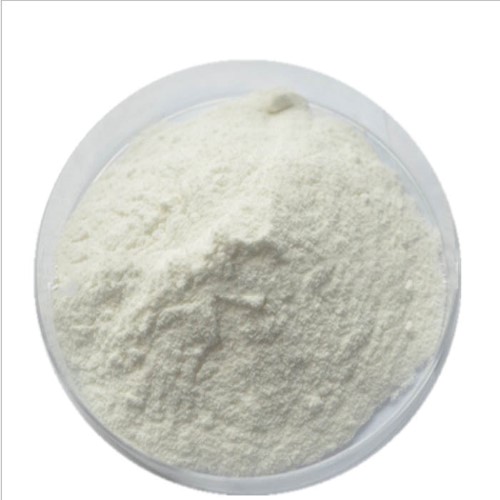Disinfect Surfaces
Phmb Is A Safe And Effective Choice To Disinfect Surfaces

Disinfectants are a vital part of the public health and hygiene. Microorganisms that cause harm on surfaces and in the water can spread diseases, trigger food poisoning and can cause death.
It's crucial to use an effective disinfectant for your home or company. Polyhexamethylene Biguanide, also known as PHMB, is a potent disinfectant which is frequently employed in clinics, hospitals as well as other healthcare facilities.
The microorganisms that polyhexamethylene Biguanide can be effective against include viruses, bacteria, and molds. To get the maximum benefit from PHMB you must be familiar with its properties, characteristics, application, and limitations.
We'll explain everything about PHMB disinfectant to ensure your home is secure and clean.
What Is PHMB made of?
The term "synthetic polymer" refers to polyhexamethylene majoruanide. This compound is comprised of hexamethylene hydrocarbon chains that interconnect fundamental biguanidine units. It is catalytic as well as an amphipathic structure.
The structure of PHMB permits it to exhibit many useful properties such as antifouling and biocidal action. It can also act as a surfactant. PHMB is often used at concentrations ranging from 0.05-0.5 percent.
What is PHMB look like?
PHMB is a clear liquid. Sometimes, it may have a slight yellow tint. The exact color will depend on the manufacturing process employed and the quality of PHMB you're using.
What is PHMB Used For?
The Polyhexamethylene biguanide hydrochloride is a wide range of applications. In the medical field, it's frequently used in dressings for wounds and products for perioperative cleansing.
It is also used as an antibacterial agent in contact lens cleaning solutions as well as in pool cleaners. PHMB biocide is effective in killing a wide range of bacteria which includes Gram positive as well as Gram negative bacteria.
How does PHMB work?
The unique mechanism of action of PHMB is what makes it an excellent disinfectant choice. You may be thinking about what PHMB is able to disinfect surfaces and other objects. The mechanism of operation is dependent on the cationic character of this compound.
PHMB may damage the cell membrane when it comes in contact with microorganisms. Here are a few of the ways PHMB impacts microorganisms.
1. Metabolism and Microbial Cell Membranes Are Disrupted
PHMB is a microbial disruptor that affects cell membranes and metabolism. At low concentrations, PHMB interacts with the cell membrane which causes it to be more permeable.
The increase in cell permeability allows essential nutrients and electrolytes to escape, leading to cell death. Higher concentrations of PHMB could block enzymes involved in the metabolism of cells and stop cells from generating the energy required to function.
In the end, cells cannot perform essential functions, and eventually die. PHMB is a potent disinfectant since it targets several ways of death in cells which makes it extremely difficult for microorganisms and microbes to develop resistance.
2. Inactivation of Viruses
PHMB is susceptible to many viruses, enveloped and non-enveloped. The enveloped viruses have their own lipid membrane, which PHMB destroys. This causes the virus to be damaged and is unable to infect cells.
Non-enveloped viruses don't have a lipid envelope but remain susceptible to PHMB. This substance binds to the capsid of the virus also known as the protein shell, and prevents the virus from gaining access to the host cell.
PHMB is a highly efficient virucidal agent which can be used to protect against infection.
3. Inhibition of the growth of fungal species
PHMB is also antifungal, making it a powerful disinfectant for fungal. This chemical works by blocking the production of ergosterol, a vital component of fungal cell membranes.
Without ergosterol, the cell membrane becomes damaged and can't function properly. The result is cells dying. PHMB is a great way to prevent the development of fungi and to keep your surfaces clear.
4. The prevention of Bacterial Biofilms
Biofilms are bacterial communities that are protected by an extracellular matrix. This extracellular matrix encircles bacteria to shield them from harmful environments and creates a stronger resistance to antibiotics as well as other disinfectants.
PHMB can disrupt biofilm formation by binding to bacteria and blocking them from forming a bond with surfaces. This hinders bacteria to build biofilms and improves the process of disinfection.
What are the Special Features of the PHMB?
There are numerous unique characteristics of PHMB which make it a perfect and non-toxic disinfectant. You'll be happy to know that PHMB is:
1. Low Toxic: PHMB has no health risks and is low in toxicity. This is why it is a perfect disinfectant for use in hospitals, homes, and other environments where people are present.
2. Environment-friendly: With its low toxicity, PHMB poses minimal risk to the environment. It's not harmful to plants or animals, making it suitable for outdoor usage.
3. Non-Flammable. PHMB can be used around heating sources as an unflammable material. It is therefore perfect for kitchens and other areas that have open flames.
4. Non-Explosive: The use of PHMB is not explosive and doesn't pose any risk to safety. Therefore, it is safe to use in public spaces and other locations where people are present.
5. Surface corrosion isn't an issue with PHMB. Because of this property it is able to be used as disinfectant in hospitals as well as other environments where metal surfaces are present.
6. Non-irritant for Human and Animal Skin: PHMB is non-irritating to animal and human skin, which means it can be used with no worry of irritating.
7. Odor-free: PHMB is odorless and will not create unpleasant odors when used to clean. This is important for those who are sensitive to strong scents.
How to Make use of PHMB?
To get the most benefit from PHMB to get the most benefit from it, you need to know how to properly use it. In general, PHMB can be used in combination with water. The exact ratio will depend on the kind of equipment you're using and the kind of surface that you want to disinfect.
Separate disinfectants can be utilized in a ratio of 100 to 500 mg of PHMB per Liter. Spray the mixture on the surface to be cleaned and allow it to sit for 10 minutes.
Safety Precautions That Should Be Utilized when using The PHMB
When used correctly, PHMB can be a safe and effective disinfectant. Certain safety precautions must be taken when making use of this product.
Avoid contact with your eyes: PHMB can irritate you when it comes in contact with your eyes. To avoid this, always wear glasses or goggles that are protective when using this substance.
Keep it out of the reach of children: PHMB must be away from the reach of children in order to prevent accidental exposure or ingestion. It should only be used by adults who are able to make use of it safely.
Avoid using on skin that is broken: PHMB should not be used on broken or irritated skin. The substance may cause additional irritation and should only be applied to skin that is healthy.
Don't inhale: PHMB should not be inhaled. Inhaling the substance in a hazard could cause serious health problems.
Conclusion
We are hoping that you have a better understanding about how PHMB disinfectant functions. We have seen that PHMB is a powerful and safe disinfectant with distinct characteristics.
Make sure you mix it in with water prior to making use of it. For various surfaces and equipment, you need to be aware of the ratio of PHMB to water. This will help you maximize the use of the substance.
Even though this substance is relatively secure, it is vital to ensure safety when using it.
Be sure not to allow this substance to come in contact with your eyes or skin Be sure to avoid breathing it. If you adhere to these safety guidelines, you can use PHMB without worry.
